
January 2023 INSIDE: SEEQUENT Senior Consultant Phil Child tells the AGS Magazine all about Seequent DYNAMIC SAMPLING TERMINOLOGY An opinion piece on updates to terminology by Peter Reading IMPACT OF COVID ON I&M SALES AND PROJECTS How the global pandemic shaped Instrumentation & Monitoring use in the UK INDUSTRY INSTRUMENT SUPPLIER ISSUES The AGS Laboratories Working Group outline the current struggles facing industry labs' with regards to obtaining new instruments Image Credit: Geotechnical Engineering
Chair’s Foreword
A very happy New year to you all and welcome to the January issue of the AGS Magazine.
As we face a fresh year, with all of its opportunities and challenges, we look forward to welcoming you to a new programme of AGS activities and publishing. You can find out about the next online and in-person events as you read on. It is gratifying that, after all the extra-curricular efforts by the working groups, committees and our secretariat and events team, that the AGS continues to grow. We welcomed several new member companies and specialists last year and we reached record audiences with our online events globally. We are collaborating with one of our equivalent trade associations in the USA and you will hear more in due course.
As the Government unlocks the next budgets for active travel funding, as well as the infrastructure commitments made in the Autumn Statement, we focus on technological developments in our sector that might be employed at ground investigation and ground engineering stages. In this
edition, we get to know more about Phil Child’s role in ground information management in member company Seequent. We learn about issues faced by monitoring instrument suppliers and we feature important updates and clarifications from the world of dynamic sampling.
I hope there is something of interest to everyone in the following pages and I look forward to seeing you all again at our Annual Conference in April.
We are always on the lookout for additional, informative content for the magazine, so if you have a case study or technical article that you think the wider geotechnical and geoenvironmental public would find beneficial, please do get in touch.
We would be interested in your feedback on the magazine and our future plans. Please contact ags@ags.org.uk if you have any comments.
ABOUT THE AGS
The Association of Geotechnical and Geoenvironmental Specialists (AGS) is a not-for-profit trade association established to improve the profile and quality of geotechnical and geoenvironmental engineering. The membership comprises UK organisations and individuals having a common interest in the business of ground investigation, geotechnics, geoenvironmental engineering, engineering geology, geochemistry, hydrogeology, and other related disciplines.
EDITORIAL BOARD
Sally Hudson, AGS Chair

Caroline Kratz, Forum Court Associates (FCA)
Katie Kennedy, FCA
Julian Lovell, Equipe Group
Calum Spires, Equipe Group
David Entwisle, BGS
Chris Vincett, Hydrock
Lauren Hunt, Arcadis
Adam Latimer, Ian Farmer Associates
Dimitris Xirouchakis, Structural Soils
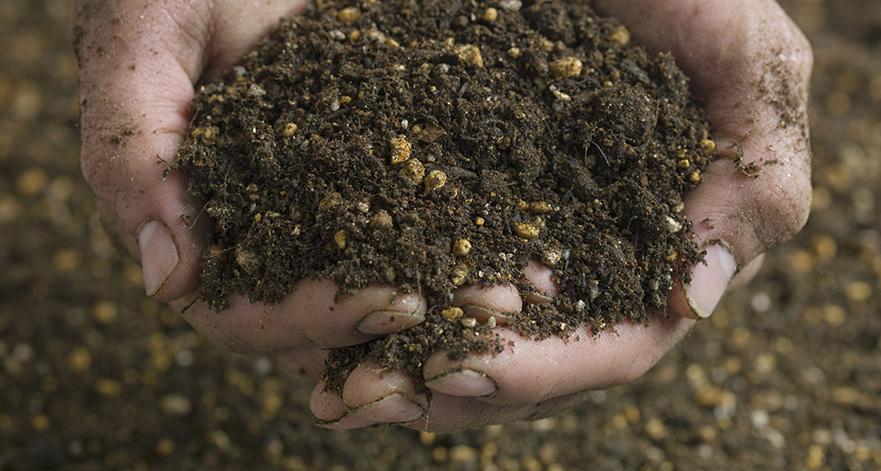
Emma Anderson, HaskoningDHV UK
Daniele Fornelli, Geotechnical Observations
EDITORIAL STORY
If you have a news story or event which you’d like to tell our editorial team about, please contact the AGS on 020 8658 8212 or ags@ags.org.uk. Please note that articles should act as opinion pieces and not directly advertise a company. The AGS is under no obligation to feature articles or events received.
CONTACT US AGS
Forum Court, Office 2FF, Saphir House, 5 Jubilee Way, Faversham, Kent, ME13 8GD
ags@ags.org.uk
020 8658 8212
Association of Geotechnical & Geoenvironmental Specialists
Hudson AGS Chair
@agsgeotech www.ags.org.uk
2 Magazine
Sally


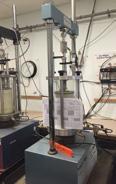


January 2023 3 PAGE 4 News in Short: Incl. upcoming AGS Events PAGE 12 AGS Webinars Upcoming & on-demand PAGE 36 Standards Update: Decmber 2022 Inside this month’s issue FEATURE PAGE 24 The Impact of COVID-19 (Coronavirus) on Geotechnical Instrumentation & Monitoring How COVID has impacted not only the sales and implementation of I&M equipment across the UK, but also potential future issues with regards to procurement. COVER STORY PAGE 28 Industry instrument supplier issues affecting geotechnical laboratories across the country. MORE INSIDE AGS ANNUAL CONFERENCE PAGE 8 The latest details and sponsorship opportunities available for the AGS Annual Conference. INDUSTRY OPINION: DYNAMIC SAMPLING PAGE 18 Industry stalwart Peter Reading offers his opinion on how dynamic sampling terminology may need an update. INSIDE: SEEQUENT PAGE 32 The AGS Magazine conducts a Q & A with Phil Child, Senior Consultant, Ground Information Management at Seequent.
News in Short

Breaking Ground Podcast: New Episode Now Live
Breaking Ground, a podcast collaboration between Ground Engineering Magazine and the Ground Forum, have released a new episode which are available for free listening: Î Bold As Brass
Hosted by Steve Hadley, Breaking Ground covers a wide range of ground engineering related topics. Key themes include sustainability, design, commerce, diversity, health and safety, welfare, construction techniques, education, and industry challenges. Episodes also profile industry members' careers within the context of discussing industry issues, construction techniques and case studies.
Breaking Ground is available for free download on channels including Spotify, Apple Podcasts and Google Podcasts. To listen to the podcast, click HERE. For further information on the podcast or for podcast sponsorship opportunities please email gforum@ground-forum.org.uk.
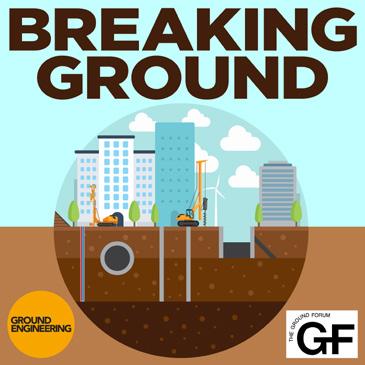
4 Magazine
The AGS is pleased to announce that in 2022, 5 member organisations and 2 specialist members were accepted by the Membership Panel and approved by the Executive. The new member organisations are TRC Companies, HS2, Chemtech Environmental, EnviroSolution and South West Geotechnical
Limited. The new specialist members are Paul Perry and Vivien Dent.
AGS Membership is open to geotechnical and geoenvironmental companies who employ specialists who can provide competent services, affiliate companies who provide support services and supplies to the members and individual specialists. Full details of membership criteria can be found at http:// www.ags.org.uk/about/become-a-member/
Jo Strange (Technical Director at CGL)
Hugh Mallett (Technical Director at Buro Happold)
Neil Parry (Director at Geotechnical Engineering)
Antonio Rotolo (Regional Counsel AECOM) Dr Russell Jones (Commercial Director at WSP)
AGS Annual Conference 2023 (live event) Î
Date: 27th April 2023 Î Fee: Tickets are priced at £95 for AGS Members and £160 for non-Members. Students may attend the conference for a reduced rate of £79. A limited number of delegates per AGS Member company may attend the Annual Conference free of charge. All prices exclude VAT Î
Speakers: ∙
Luke Deamer, Group Sustainability Manager (Keller Group)
Chaido Doulala-Rigby (Yuli), Chief Civil Engineer & Business Development EH (Tensar).
Vivien Dent (Environment Agency)
The rest of the speakers will be announced in due course. Î Sponsorship: Contact ags@ags.org.uk for full details of available packages
January 2023 5
1. AGS Guide to Ground Investigation Reports 2. Client Guide: The Purpose and Use of a Ground Condition ‘Desk Study 3. Comment on the approach for classifying sites into green, yellow or red To download the publications for free; click here
top three AGS publications
the last month Loss Prevention Guidance: What You Don’t Realise You Need To Know (webinar) Î Date: 22nd February 2023 Î Fee: FOC Î
∙
∙
∙
∙
New AGS Members in 2022
The
in
Speakers:
Î Sponsorship: Contact ags@ags.org.uk for full details of available packages
∙
∙
∙
AGS Live and Virtual Events 2023
News in Short
The Coal Authority and Mining Risk Assessment
In October 2020 the AGS posted an article in the Newsletter describing concerns raised by a number of Members with respect to the Coal Authority (CA) and coal mining risk assessments (CMRAs), where the CA was;

1. acting as a Statutory Consultee for planning applications (in relevant areas) and thus providing related guidance for developers,
2. undertaking CMRAs on behalf of third parties as a commercial service.
Views of Members were sought, following which, discussions were held with the CA and a detailed account of the various concerns were received. The CA responded to this letter by referring to their ethical wall policy (see October 2020 issue of the AGS Magazine) on the basis they considered the concerns of members to be unfounded.
In summary the CA state that Coal Mining Risk Assessments prepared by the CA are produced by an entirely different team to their planners, and that CMRAs prepared by the Coal Authority are treated in exactly the same way as those from any other provider and that Coal Authority Consultant’s Coal Mining Report
(included in the CMRA), is charged at the same rate for both internal and external customers.
On behalf of Members, the AGS wrote again to the CA requesting specific evidence to support the various assertions made. After a series of holding replies, the Coal Authority informed us that our letter had been escalated to a Stage 2 complaint and would be responded to in due course. In August of this year, the CA provided their response to this complaint. Although the CA did not provide any supporting evidence, they did provide a firm assurance that their procedures [the Confidentiality (Ethical Wall) policy and guidelines] are being employed, which ensures they act correctly and not in contravention of their status as a nondepartmental public body.
The AGS Loss Prevention Working Group has agreed that it has now taken this matter as far as we can at this stage. However, Members are advised that if in future they are involved in a situation where there is particular evidence that the CA is not complying with their stated policy and procedures described above, that evidence could be submitted to the Parliamentary and Health Service Ombudsman https://www.ombudsman.org.uk/. The AGS LPWG would be pleased to be copied in to any such correspondence or updated with the consequences and we would be happy provide any support / assistance that we can at that time.
6 Magazine

Association of Geotechnical & Geoenvironmental Specialists ■ Good practice in geotechnical and geoenvironmental engineering ■ Quality companies providing a quality service ■ Health and Safety ■ AGS Data Format WHY BECOME AN AGS MEMBER? Enhance your status in the industry. Make a statement about quality and good practice. Participate in the AGS Working Groups and help shape the industry and set the standards. ■ Guidance to good practice ■ Listing in the Directory of Members ■ AGS Magazine focused on ground engineering ‘hot topics’ ■ Legal helpline ■ Chemical safety helpline ■ AGS Loss Prevention Guidance Document ■ Seminars, meetings, conferences and webinars ■ Collaboration with other bodies ■ Liaison with UKAS ■ Lobbying on matters important to the sector ■ Developing and maintaining the AGS Data Format For further information on the AGS and details on how to become a member visit www.ags.org.uk Established in 1988, the Association of Geotechnical and Geoenvironmental Specialists is a not-for-profit trade association which represents over 140 leading companies specialising in site investigation, geotechnics, geoenvironmental engineering, engineering geology, geochemistry, hydrogeology, and other related disciplines. WHAT DO WE OFFER? MEMBERS CAN CONTRIBUTE BY PRODUCING SUCH DOCUMENTS AS: ■ AGS good practice guidance ■ AGS publications ■ AGS safety guidance ■ AGS client guides MEMBERS CAN PARTICIPATE IN AGS WORKING GROUPS: ■ Laboratories ■ Contaminated Land ■ Safety ■ Business Practice ■ Loss Prevention ■ Data Management ■ Executive Committee ■ Geotechnical ■ Instrumentation and Monitoring WHAT DO WE STAND FOR?
The AGS is pleased to announce that their flagship event, the Annual Conference will return on Thursday 27th April 2023 to the Barbican in London.
This full day, networking event will see six guest speakers present on a variety of hot topics, and short presentations from each of the AGS Working Group Leaders. Speakers confirmed to date include Luke Deamer, Group Sustainability Manager (Keller Group), Vivien Dent (Environment Agency) and Chaido Doulala-Rigby (Yuli), Chief Civil Engineer & Business Development EH (Tensar). The conference will be Chaired by AGS Chair, Sally Hudson and AGS Chair Elect, Vivien Dent.
The event is currently sponsored by Soil Engineering, Insitu Site Investigation, Geotechnical Engineering, SOCOTEC, Equipe, Geosense and Groundsure.
TICKETS
Tickets are priced at £95 for AGS Members and £160 for non-Members. Students may attend the conference for a reduced rate of £79 by emailing ags@ags.org.uk. All prices exclude VAT. Registration closes on Monday 17th April. A limited number of delegates per AGS Member company may attend the Annual Conference free of charge. The number of complimentary tickets provided is dependent on the number of specialists in your company. To claim your complimentary tickets, please complete the form found on the AGS website HERE and return it to ags@ags.org.uk before Monday 17th April. Terms and conditions apply; please see form for full details.
SPONSORSHIP
A limited number of sponsorship opportunities are available for companies who wish to have a presence at the live conference and exhibit company offerings and initiatives to our 200+ attending delegates.
EMERALD SPONSOR (AGS Member Rate: £1100/ Non-Member Rate: £1350)

Î
Î
Entry for three delegates into the event
A designated area to exhibit company initiatives, research and software. This exhibition space can also showcase marketing materials, literature and banners
Î
Full page advert in AGS Magazine (worth £400, over 5,500 subscribers)
Î Company logo on the event PowerPoint presentation holding slide
Î
Company logo and overview on the event programme
Î Company overview on the AGS website
Î
Company logo to feature on promotion emails
Î
Two announcements of your company’s involvement on the AGS Twitter page (over 3420 followers)
Î Two announcements of your company’s involvement on the AGS’ LinkedIn page (over 6900 followers)
Î Company mention in pre and post-event articles in AGS Magazine
*Limited packages available
8 Magazine
GOLD SPONSOR (AGS Member Rate: £950 / Non-Member Rate: £1250)
Î
Entry for two delegates into the event
Î A designated area to exhibit company initiatives, research and software. This exhibition space can also showcase marketing materials, literature and banners
Î Company logo on the event PowerPoint presentation holding slide
Î Company logo and overview on the event programme
Î
Company overview on the AGS website
Î
1/4 page advert in AGS magazine (worth £160, over 5,500 subscribers)
Î Company logo to feature on promo emails
Î Two announcements of your company’s involvement on the AGS Twitter page (over 3420 followers)
Î Two announcements of your company’s involvement on the AGS’ LinkedIn page (over 6900 followers)
Î Company mention in pre and post-event articles in AGS Magazine
*Limited packages available
ASSOCIATE SPONSOR (AGS Member Rate: £550 Non-Member Rate: £700)

Î Entry for one delegate into the event
Î Company directory in AGS magazine (worth £50, over 5,500 subscribers)
Î Company logo on event PowerPoint Presentation holding slide
Î Company logo on the event programme
Î
Î
Company overview on the AGS website
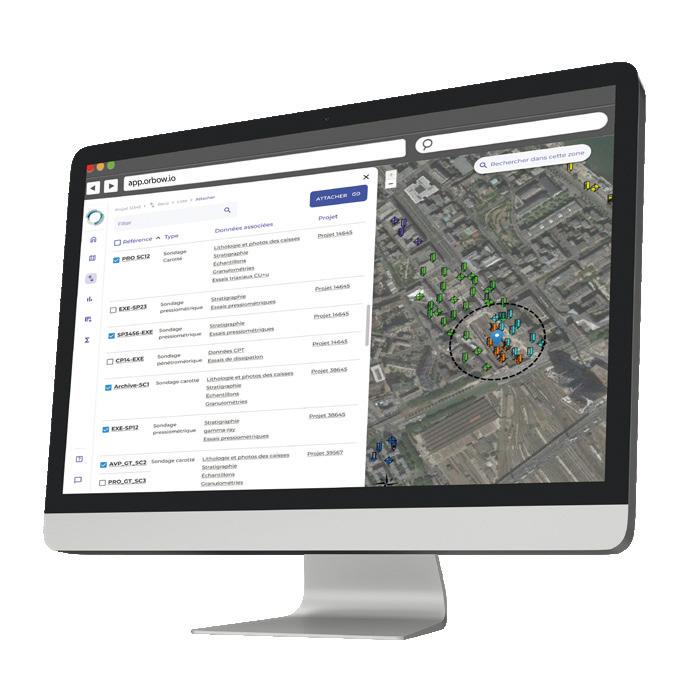
Company logo to feature on promo emails
Î Announcement of your company’s involvement on the AGS Twitter page (over 3420 followers)
Î Announcement of your company’s involvement on the AGS’ LinkedIn page (over 6900 followers)
Î Company mention in pre and post-event articles in AGS Magazine
If you’d like to confirm your support, please contact Caroline Kratz or Angharad Lambourne-Wade on ags@ags.org.uk before Friday 31st March. Please note that packages are limited and are offered on a first come, first served basis.
January 2023 9
orbow@terrasol.com www.terrasol.com Your geotechnical operating system
for all your geotechnical projects Cloud
GIS
A web platform with a smooth & all-inclusive workflow
collaboration
projects library A compatible AGS survey database Analytic and calculation tools
This year’s AGS Geotechnical Data Conference was a sold-out event with just under 150 attendees gathering at the Burlington Hotel in Birmingham.

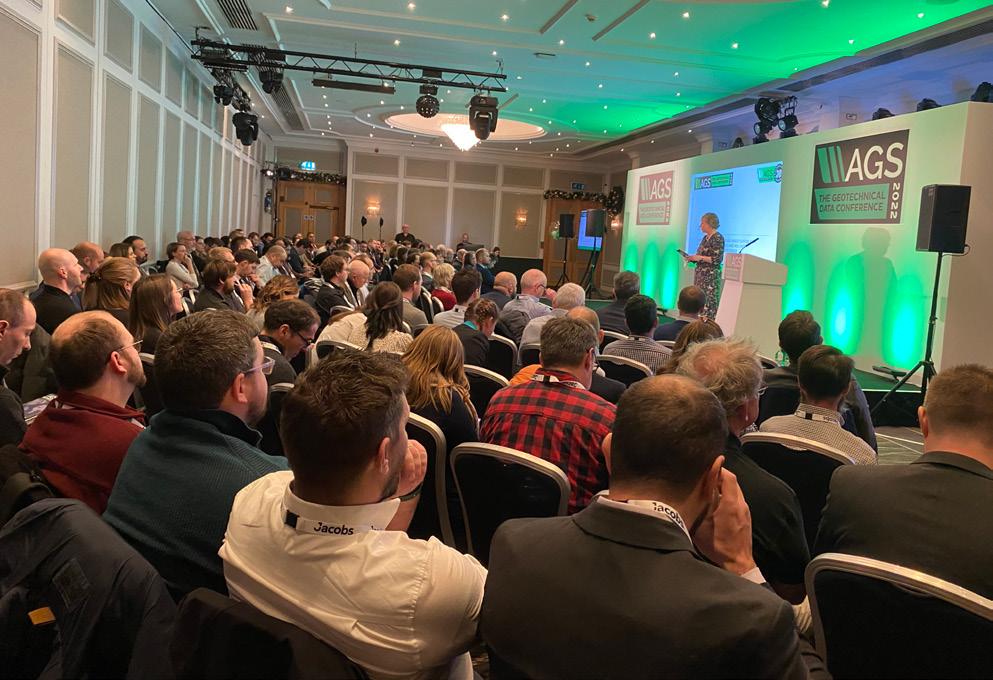
Chaired by Jackie Bland (Principal Ground Investigation Data Manager at Structural Soils and AGS Data Management Working Group Leader), the conference saw delegates enjoy four sessions of presentations and Q&A’s throughout the day. Celebrations for the 30th anniversary of the AGS Data Format also took place, with balloons and cupcakes decorating the venue as delegates networked.
Beginning with the ‘What’s Happening Now’ session, Jackie Bland opened the conference with a presentation on AGS 4.1.1, before passing over to Neil Chadwick (Director, Digital Geotechnical) and Jérôme Chamfray (Chief Geodigital Engineer, Jacobs) for a talk about the AGSi V1.0.0 launch. Dr Roger Chandler (Director, Geotechnical Information Management, Seequent) covered the OpenSource AGS Validator and the AGS 4 Python Library, Phil Wade (Managing Director, Datgel) updated on AGS 4.2 In Situ Testing, Tom Smith (Senior Geotechnical Engineer, Ørsted) spoke about
10 Magazine
using AGS data when transferring advanced geotechnical laboratory test data, and Neil Chadwick returned for a short update on AGS Piling to end the session.
Chaired by Craig Brown (Senior Data Manager, BAM Ritchies), session two comprised of a panel Q&A which saw the audience get involved with interactive polls relating to the use of data in their organisations. The panel included Vicky Corcoran (Principal Engineering Geologist, Atkins), Tom Smith, Mark Bevan (Associate Director (Data Management Team Leader), Structural Soils), Paul Chaplin (Data Manager – Ground & Water, WSP UK) and Jackie Bland. Delegates were able to submit their questions live to the Data Management Working Group, spurring discussions on the future of data and the Data Management Working Group’s next steps.
For session three, four speakers shared their thoughts on the future of data in their own organisations. The session was chaired by Simon Miles (Chief Geotechnical Engineer, Atkins) and began with Jonathan White’s (Geotechnical Engineer, Ørsted) presentation about using AGS data to build offshore wind farms. Callum Irving (Lead Geospatial Data and Standards Advisor, Cabinet Office – Geospatial Commission) spoke of the work taking place with the Geospatial Commission, Verity Wadesmith (Principal Geotechnical Engineer, Mott MacDonald) discussed how AGS data has been better used for national highways, and Pamela Rigby (Principal Geotechnical Engineer, United Utilities) finished the session with a presentation on the challenges relating to data from a client’s perspective.
Our final session ‘Pushing the Boundaries of Data’ was chaired by David Entwisle (Honorary Research Associate, British Geological Survey), and opened with Ian Williams (Director at GeoConsult and Ground Investigation) demonstrating how he works with AGS data in Mathematica Notebooks. Tony Daly (Managing Director, Amageo) touched on the use of AGS data with open-source software, before Julian
Lovell (Immediate Past AGS Chair and Managing Director at Equipe Group) delivered the final presentation with a discussion on the revisions in the new edition of the UK Specification for Ground Investigation with particular reference to AGS data..

It was a great event and a brilliant opportunity for everyone to gather and exchange ideas.
A big thank you to all of our speakers, and a special thanks to our sponsors and exhibitors: Jacobs, Seequent, SOCOTEC, BAM Ritchies, Geotechnical Engineering, Datgel, Geosense, SoilCloud, Wolfram, Landmark Geodata, Equipe, Terrasol, SUEZ and Groundsure.







SPONSORED BY





January 2023 11
NEWS, REPLAYS & UPCOMING EVENTS AGS WEBINAR
AGS Webinar
Replays - Available On Demand
The AGS currently has 18 webinar replays available for on-demand viewing on www. ags.org.uk. Webinar topics include our highly successful A Guide to Pressuremeter Testing: From Site to Design, Sample Disturbance: What is it?, The New Yellow Book – UK Specification for Ground Investigation, and much more.
The majority of these replays are free to view, but there are a small number with a modest fee attached to them. Please note that once paid for, a webinar can be viewed as many times as the buyer wishes.
To view our entire back catalogue, click HERE, or take a look at some of our recent topics below:
A Guide to Pressuremeter Testing: From Site to Design

Cost: FOC
Webinar Overview: This webinar replay provides an introduction to direct strain pressuremeters, such as those manufactured and used by Cambridge Insitu. It also provides a summary of the different types of pressuremeter and how they are deployed in different situations, an explanation of how testing is carried out and an outline of the theory in which the data analysis is based. Finally, there is an overview of how the analysis is undertaken in a real world context.
Speakers: Speakers include Alex Dent (Associate Director at WSP), Emma Cronin
(Senior Geotechnical Engineer at SOCOTEC UK), Thomas Cragg (Director, Cambridge Insitu Ltd), Yasmin Byrne (Senior Engineer, Cambridge Insitu Ltd) and Ross Thompson (Associate Director, WSP UK Ltd).
The New Yellow Book – UK Specification for Ground Investigation
Cost: FOC
Webinar Overview: This webinar replay sets the context for the revision and explains the changes made and reasons behind them.
Speakers: Speakers include Julian Lovell (Immediate Past AGS Chair and Managing Director at Equipe Group), Matthew Baldwin (Independent Consultant) and Stewart Jarvis (Associate Director, Ground Engineering, Arup).
Sustainability in the Delivery of Brownfield Regeneration: Sustainable Management of Soils
Cost: £25 for AGS members or £30 for non-AGS members
Webinar Overview: This webinar discusses the new Code of Practice for the Sustainable Use of Soils and its implications to development, legal perspective on the liabilities imposed on developers and consultants under the revised Duty of Care and tips and experience so as to better assist practitioners in the classification of soils.
12 Magazine
Speakers: Speakers include Ian Bishop (Managing Director at One Touch Data), Nick Willenbrock (Manager - Definition of Waste: Development Industry Code of Practice at CL:AIRE), Anna Willetts (Partner at Gunnercooke LLP), Will Fardon (Technical Director at Chemtech Environmental) and Chris Swainston (Principal Environmental Consultant at Soils Limited).
Sustainability in the Delivery of Brownfield Regeneration: Sustainable Remediation Solutions
Cost: £25 for AGS members or £30 for non-AGS members
Webinar Overview: This webinar discusses The Environment Act, the now mandatory 10% biodiversity net gain (BNG) target for developments in England and Sustainable Management Practices.
Speakers: Speakers include Alexander Lee (Technical Director, Environment at WSP), Jill Crawford (Senior Associate Solicitor in
the Planning and Environment Team at Irwin Mitchell), Jon Davies (Director at RSK Biocensus / RSK Wilding) and Nicola Harries (Technical Director at CL:AIRE).
The Development of a Degree Apprenticeship in Geoscience
Cost: FOC
Webinar Overview: This webinar replay aims to inform about the decline in students enrolling in geoscience courses at university and update on the progress with the Degree Apprenticeship in Geoscience
Speakers: Speakers include Sally Hudson (AGS Chair and Regional Director at Coffey Geotechnics Limited, A Tetra Tech Company), Dr Nick Koor (Reader in Geological Engineering, University of Portsmouth (School of the Environment, Geography and Geoscience)) and Paul Roberts (Regional Director at AECOM).
Please note: Speaker information correct at the time of the webinars.
Training for Early Career Geopractioners remains a priority and this course has been developed to bridge the gap between academia and the essential industry requirements for practitioners in their early years. This CPD certified course will comprise a series of training courses provided by leading UK experts which will provide the backbone of knowledge to underpin the understanding of effective ground investigations. This will provide a unique training and learning development experience for those in the early development of their geotechnical / geoenvironmental career. The principle aim of the training will be to engage with the future practitioners of our industry, share knowledge and provide an opportunity for discussion.
Monday 6th March 2023 – Planning for effective ground investigations
Course Leader: Julian Lovell, Managing Director, Equipe Group and Past Chair of AGS
Tuesday 7th March 2023 – Safe Working on Geotechnical Sites
Course Leader: Tom Phillips, Director, RPA Safety Services
Wednesday 8th March 2023 – Field (In situ) Testing

Course Leader: Pete Reading, Director, PJRC
Thursday 9th March 2023 – Field Instrumentation and Monitoring
Course Leader: Dr Andrew Ridley, Managing Director, Geo-observations Limited
Friday 10th March 2023 – Understanding and Scheduling Laboratory Testing
Course Leader: Chris Vincett, Principal Engineer, Hydrock Consultants
AFFLIATE MEMBER SUPPLIER MEMBER
ORGANISED & HOSTED BY
COST: £1000 + VAT
COURSE
supporting major
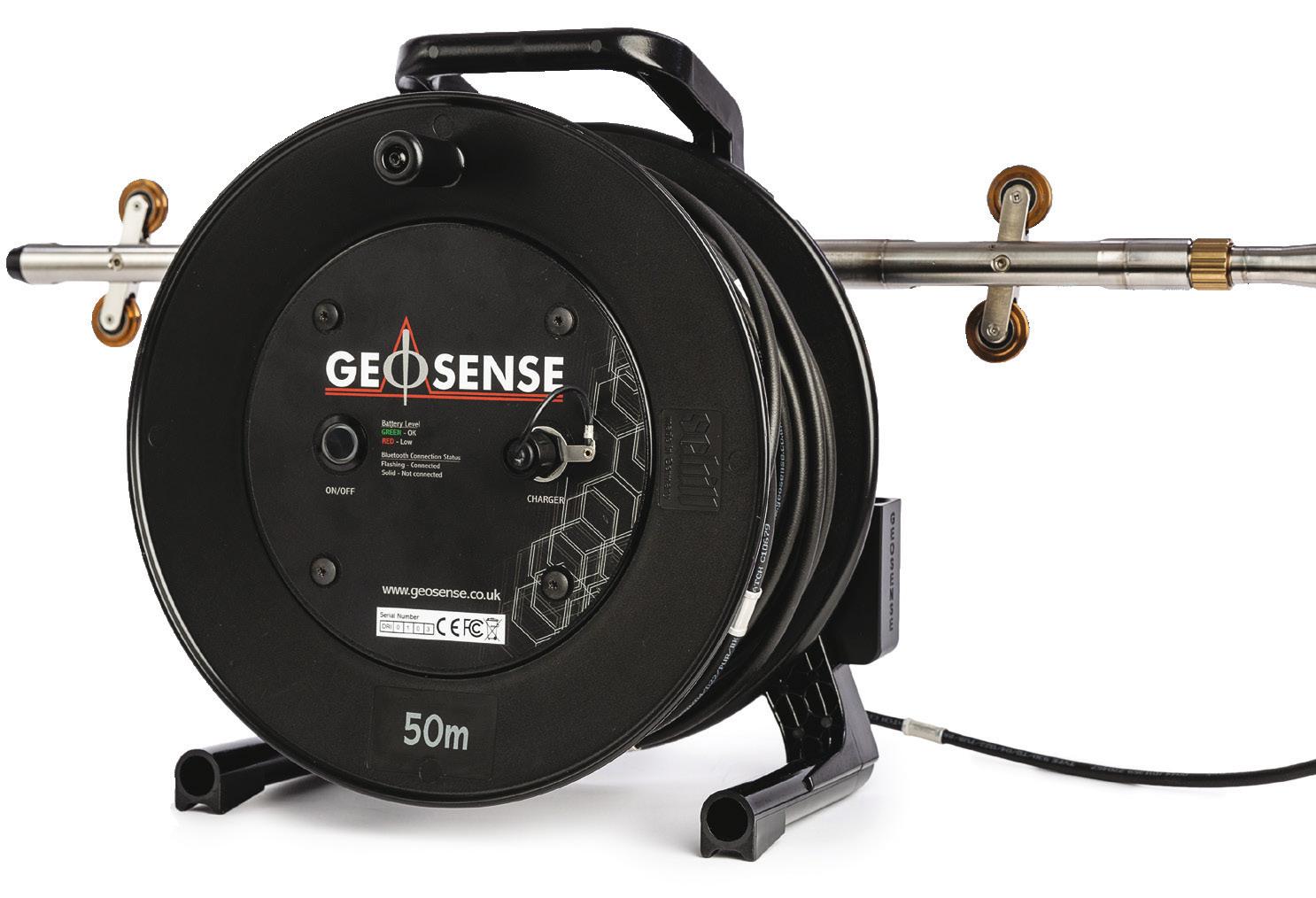

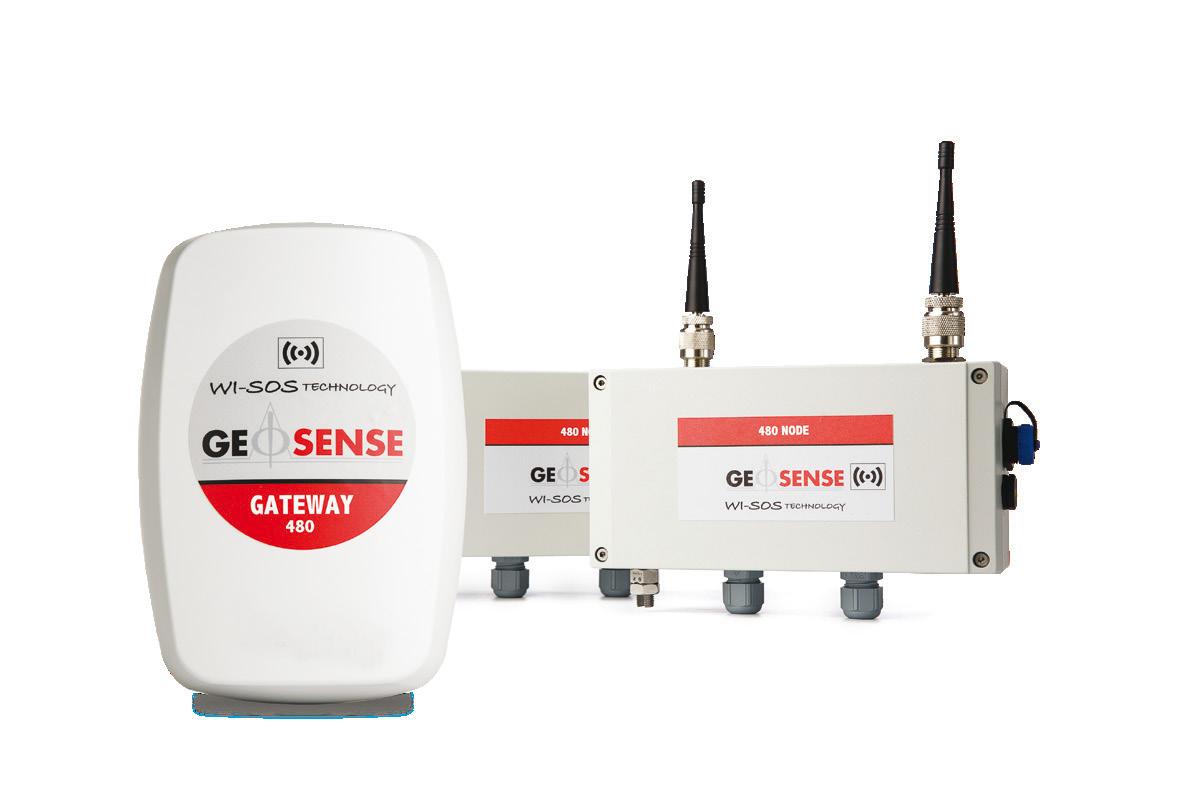

VW Sensors Wireless Solutions
Inclinometer & Tilt Sensors INSTRUMENTS FOR GEOTECHNICAL & STRUCTURAL MONITORING geosense.co.uk
MEMS
worldwide
With Geotechnical & Structural Monitoring instruments for over 28 years innovate | invest | plan | support
projects
The AGS webinar on A Guide to Pressuremeter Testing: From Site to Design took place on 10th November 2022 and had over 950 delegates registered to attend.

This webinar included a presentation by Thomas Cragg (Director, Cambridge Insitu Ltd) and Yasmin Byrne (Senior Engineer, Cambridge Insitu Ltd) on ‘A guide to direct strain pressuremeters, from site survey to engineering parameters’, which provided an introduction to direct strain pressuremeters such as those manufactured and used by Cambridge Insitu, a summary of the different types of pressuremeter and how they are deployed in different situations. The talk also explained how testing is carried out and an outline of the theory on which the data analysis is based.
The second presentation was by Ross Thompson (Associate Director, WSP UK Ltd) on ‘Consultant’s view on pressuremeter testing in relation to foundation design’, which gave a brief overview of how various pressuremeter derived parameters have been used in design of foundations, in particular the design of foundations for high rise developments in Manchester and covered how pressuremeter testing has been used to optimise foundation solutions and a comparison between other methods of testing.
The webinar was chaired by Alex Dent (Associate Director at WSP) and Emma Cronin (Senior Geotechnical Engineer at SOCOTEC UK).

Thank you to In Situ Site Investigation for sponsoring the webinar.
If you missed this webinar, the replay is now live and available for view on the AGS website for free. Click HERE to view the replay.
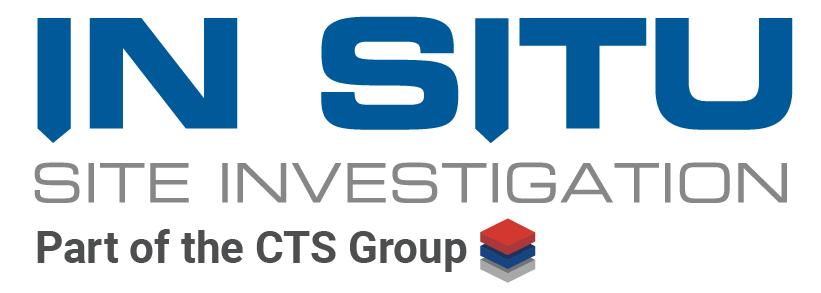
15 January 2023
Image credit: Cambridge Insitu Ltd
NEWS, REPLAYS & UPCOMING EVENTS AGS WEBINAR
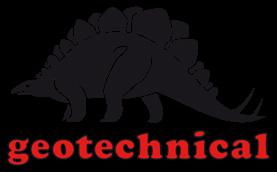
We’re pleased to announce details of a new, free to attend webinar on the updated AGS Loss Prevention guidance.
Loss Prevention Guidance: What You Don’t Realise You Need To Know (2022 Updates) is a virtual, hour-long event taking place on Wednesday 22nd February at 11am.

The AGS Loss Prevention Working Group has produced a plethora of guidance over many years, which used to be included in a document called the ‘toolkit’. This has since moved on to an online resource of Loss Prevention Guidance, published on the AGS website.

However, some of the guidance refers to legal cases and legislation that could become outdated or have been updated respectively. The LPWG, therefore, commissioned a legal review of this guidance in 2022 to check it is up to date. This review has been carried out by Dominic Ruck-Keen of 1 Crown Office Row. This free webinar, Chaired by Jo Strange (Technical Director, CGL) and sponsored by Geotechnical Engineering, will be looking at some of the key loss prevention guidance, which is recommended reading for all geo-professionals and anyone making commercial decisions, and reiterating some key learning points as well as identifying where significant updates have been made and the implications.
Presentations will include Reliance on Third Party Reports (Hugh Mallett, Technical Director at Buro Happold), PI Insurance (Neil Parry, Director at Geotechnical Engineering), Limits of Liabilities (Antonio Rotolo, AECOM) plus a short presentation from Dr Russell Jones (Commercial Director at WSP) on the new LPA on indemnities to highlight the LPA.
The AGS has two sponsorship packages available for this event, for companies wishing to showcase their offerings in front of a worldwide audience. Please see details adjacent.
16 Magazine
SPONSORED BY
HEADLINE SPONSOR - Price: £600 (members) or £900 (non-members)
*one package available per webinar
Î Company website link or pop-up promotion to feature during the live webinar
Î Large logo on sponsor slide during the webinar
Î Company mention during webinar opening and closing address
Î Logo and overview in the event program
Î Company Q&A feature in AGS Magazine (5,440 subscribers)
Î Full page advert in AGS Magazine (worth £400)
Î Two complementary event registrations (worth up to £180)
Î Company logo and overview featured on the webinar registration page
Î Logo featured on promotional marketing emails
Î Company logo and overview on the AGS’ Twitter page (3,455 followers)
Î Company logo and overview on the AGS’ LinkedIn page (7,003 followers)
Î Company logo featured on replay email campaigns
Î Company inclusion in a follow up article in AGS Magazine (5,440 subscribers)
ASSOCIATE SPONSOR - Price: £350 (members) or £650 (non-members)
*10 packages available per webinar
Î Logo on sponsor slide during the webinar
Î Logo and overview in the event program
Î Company mention during webinar opening & closing address
Î Logo featured in promotional marketing emails
Î Company directory insert in AGS Magazine, worth £50 (5,440 subscribers)
Î One complementary webinar registration (worth up to £90)
Î Company logo and overview on the AGS’ Twitter page (3,455 followers)
Î Company logo and overview on the AGS’ LinkedIn page (7,003 followers)
Î Company mention in a follow up article in AGS Magazine (5,440 subscribers)
Î Company overview on the AGS website
Î Company logo featured on replay email campaigns
All prices exclude VAT.
To register to attend this webinar please click HERE or for sponsorship opportunities please email ags@ags.org.uk.
17 January 2023
Light weight tracked rig using the drop weight to deploying a dynamic sampler tube system (DWDS)
Industry Opinion:
Dynamic sampling terminology
Updating for clarity and consistency
As with many geotechnical investigative techniques, dynamic sampling has arrived via a circuitous route as an investigation tool to obtain samples primarily for contaminated land studies. The main precept leading to its development was to provide an investigation method that was relatively cheap and easy to operate whilst providing samples for inspection and testing.

Ideally this would involve a method, which did not require heavy equipment and numerous tools and was easy to operate.
A number of variations have been developed in the design of sampling barrels and the method by which they may be driven, and it is perhaps not surprising that the terminology, which has been applied to the various methods, is somewhat confusing. One particular example is the term windowless now in common use where the sampling barrel used is a plain cylinder without the conventional rounded ended slots or “windows” running down the length of the barrel. However, this term is not used for all instances where dynamically
18 Magazine
Disclaimer: The following article is an opinion piece and does not represent the views of the entire EGS.
Opinion piece provided by: Peter Reading, PRGC
Photo Credit: Delta Simons
driven barrels are devoid of windows, which only adds to the confusion.
This is further complicated by the term dynamic sampling being used to describe three distinctly different methods of driving the sampling barrels: the original method using a hand held jack hammer, the subsequent development of a light weight drop hammer rig on a tracked chassis and the more recent development as part of a rotary rig via a dual head system. These three methods deliver very different results, although in common use they are referred to with the same terminology, which primarily refers to the sampler and not the method of deployment. This discussion provides a suggested terminology, which removes the confusing term windowless and differentiates between the methods in common use.
to include long slots or windows to improve access to the sample. For the window sampler to progress the hole to depth the diameter of the sampler is progressively reduced thus reducing the friction on the outer wall of the sampler and aiding recovery. Even so it is often necessary to use jacks to extract the tubes from the ground. There was also a limitation on the lithologies that could be successfully penetrated and sampled using the method.
The late 1980s into the 1990s saw a significant change in the ground investigation industry with the demise of many of the household names of ground investigation practitioners.
“ Windowless sampling
about following the development of the small track mounted rig able to drive a thick walled sample tube equipped with a liner, to moderate depths.
It was during the early 1980s when window sampling appeared. The window sampler uses a hand held hydraulically operated jackhammer to drive tubes into the ground. This was an extension of the hydraulic breaker often see breaking concrete and surfacing such as road pavement. By the addition of a tube with a cutting edge at one end the hammer could be used to drive the tube into the ground and retrieve a sample of the soil to depths of a few metres.
The jackhammer equipped with tubes driven into the ground meant the process became quicker. However, it is difficult to extract the soil from the tubes thus a slot was cut in the side of the lead tube to enable the soil to be seen and described. The tube was designed with a cutting edge at the bottom and a sloping interior at the top, which allows the soil to flow through the sampler. This sampler was difficult to use and was further developed
The result from this was many drillers became self-employed. Being selfemployed the cost of a full cable tool set up was significant.
Windowless sampling came about following the development of the small track mounted rig able to drive a thick walled sample tube equipped with a liner, to moderate depths. These become commercially available around the mid to late 1990’s. These rigs seen as a more affordable method for the self-employed driller to put down holes to depths of up to 6m. (Although in some soils depths of 10m or more may be achieved) The rig, which generally weighs less than 1 tonne, can be readily moved on a trailer or transported in a long wheelbase van.
The arrival of this smaller much simpler, cleaner and cheaper rig to sample the ground was welcomed by those specifying investigations, whilst ignoring issues such as quality and representativeness of the samples recovered. The rig tooling is very different to that of the window sampler in that the tubes do not have the slot (window) in them, hence
19 January 2023
came
the somewhat nonsensical term windowless was used to describe them. As with the window sampler, they are reduced in diameter with depth to enable ease of extraction. In order to resolve the difficulty of removing the sample from the tube a plastic liner is used. The incorporation of the liner means that the body of the sampler becomes thicker and the area ratio becomes considerably higher, almost 115% for smaller diameter barrels. At 123mm diameter the area ratio is 50%. Such a high area ratio means the sample quality can never be considered better than a Class 3 and is usually Class 4 or 5. It is useful to note that the area ratio (Ar) is predominantly determined by the cross sectional area of the cutting shoe and not the sample tube itself. The sampler will only influence the Ar if it has a greater
cross sectional area than the shoe. The degree of disturbance is also affected by the taper angle of the blade of the cutting shoe, which should be no more than 5 degrees for a class 1 sample system and is unrealistic for a system designed for all soil types.
During the early 2000s rotary drilling became a common method for sampling stiff clay. When deployed it would often be required to predrill using cable percussive rig to progress the borehole through superficial fine and coarse soils. Rig manufacturers, seeing the inefficiency of this two rig deployment, modified the rotary rig by providing a dual head arrangement whereby the superficial soils could be drilled using the same sample tooling as the earlier dynamic sampler rig. The borehole can, therefore, be progressed initially by dynamic sampling using a hydraulic percussive head and when at a suitable depth can be swopped to the rotary head to enable coring to take place. This was seen as a relatively simple addition since many rotary rigs were already equipped with both wire rope winches and a percussive hammer mechanism. The hydraulically operated hammer mechanism is able to deliver blows very rapidly. The more powerful rotary rig is able to dynamic sample to much greater depths than the smaller tracked machines,
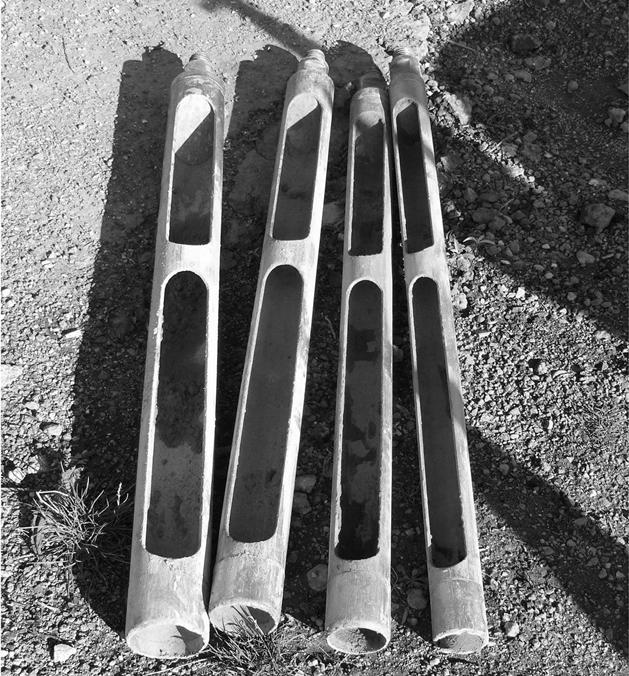
20 Magazine
“ This was seen as a natural, relatively simple addition since many rotary rigs were already equipped with both wire rope winches and a percussive hammer mechanism.
A selection of window sampler tubes
largely due to its ability to extract the sampler from greater depths. It is also able to handle a single diameter of tooling and sampler and can install and extract casing. In soft and firm soils the rig pull down can be used to push the sampler into the ground until the resistance is too great, at which point the hammer can be used. The extra power and ability to case the hole whilst drilling at a large diameter improves the ability to obtain a slightly higher quality sample. It would seem that to continue to refer to the method as windowless sampling is not helpful and a distinction needs to be made to differentiate the methods of use.
It is useful to look at what our current codes and standards provide on this subject.
BS 5930+A1 (2020) described three methods of deploying the windowless sampler:
1. Hand held “rigs“ commonly electric, hydraulic, pneumatic and petrol driven percussive hammers - all methods are hand held.

2. Feed frame mounted drop weight rigs
3. Feed frame percussive hammer type rigs, these rigs are hydraulically powered.
BS EN ISO 22475 part 1 (2022) Table 2 line 2 refers to windowless samplers as thick walled (OS-TK/W) driven dynamically and being within sampling category C[B] where OSTK/W refers to open tube samplers Thick walled.
There are two relevant notes that are within
- which should be explained in such cases –the higher quality indicated in the brackets can be achieved.
• Note b) states includes windowless samplers
Table 2, Line 7, however, refers solely to windowless sampling and states that the achievable sample category is D(C). This clearly conflicts with the information in line 2.
BS EN ISO 22475-1(2022) provides an indication of quality class for various methods of drilling. The footnote to Table H4, Tube Sample Quality Class Assessment, states that the classification is not intended for dynamic samples from windowless samplers within a plastic liner, and advises that these will always only be classed as disturbed samples.
It is clear that with an ad-hoc history of
21 January 2023
Photo Credit: Apex Drilling Two man crew window sampling (HHWS)
the various sampling types, terms have become confused. It is time to adopt clearer terminology. To do this the terminology should differentiate the method used to drive the sampler and then describe the sampler type and to remove the confusing term “windowless”.
The delivery of the sampling method uses either hand held (HH) equipment with a hydraulic hammer; the drop weight (DW) method such as the Terrier rig or the hydraulically operated percussive hammer (HP) usually forming part of a rotary rig with a dual head. It should be noted that organisations must seriously consider the health implications for their operatives using hand held sampling due to the risk of HAVS.
There are basically two sample types the window sample (WS) a tube with a window / slot in the tube and the dynamic sample (DS) system using a sample barrel fitted with a plastic liner, both are thick walled sampling systems with area ratios considerably in excess of 15%.
Combining the sample system and the method of driving the barrels gives the following terminology:
Hand Held Window Sample (HHWS) – referring to a hand held hydraulic hammer, which is used to drive rods that connect to the sampler tube, which has slots or “windows” cut in its side. The diameter is progressively reduced every metre in order to reduce friction and aid retrieval. The sample is of very poor quality from a geotechnical perspective, being highly disturbed and altered, and is considered to be of quality Class 5.
Hand Held Dynamic Sample (HHDS) – refers to a hand held hydraulic hammer used to drive the dynamic sample tube assembly with an inner plastic liner, (although less commonly used , it is understood that this combination
has been adopted in some situations).
Drop Weight Dynamic Sample (DWDS) – used when referring to a small tracked or wheeled machine with a short mast where the driving mechanism is a drop weight carried on a chain lift. The weight is dropped onto an anvil that connects to drives rods fitted onto the sample tube. Due to the limited energy from the rig, the sample tubes are reduced in size as the hole is progressed deeper, which reduces the friction between the sampler and the sides of the boreholes. This limits the depth achievable and the sample diameter recovered is reduced with depth (along with the sample quality). The depth of penetration is limited to less than 10m depending on the soil type being sampled. The sample quality is poor and not better than Class 4, mainly due to the very high area ratio, which reaches about 115% when using 40mm diameter tubes.
Hydraulic Percussive Dynamic Sample (HPDS) – uses the dynamic sampling (DS) system to drive sample tubes by blows from a hydraulic percussive (HP) hammer which is part of a dual head system in conjunction with rotary drilling. Because the rig is more powerful, it is able to drive the sampler with the more powerful and rapid application of blows from the hydraulic percussive hammer. It is also capable of pushing the sampler into soft to firm soil, a method considered significantly better than driving. The added power of the rig also enables the sampler to be used at a single size usually either 100mm or 123mm diameter. The 123mm diameter sampler enables continuation of the borehole, below the HPDS section using wireline rotary drilling equipment. Casings may also be installed to ensure borehole stability whilst dynamic sampling. The area ratio for this method is typically around 47%, but it does remain constant as the same tube diameter is used for the full depth sampled. At best the method can only be considered to provide a Class 3 sample.
22 Magazine
Method type
Sample diameter
Hand Held Window Sampling (HHWS)
100mm to 40mm Requires sample diameter to be reduced with depth;
Depth of sampling 5 to 6m
Drop Weight Dynamic sampling or Hand Held Dynamic Sampling (DWDS)/(HHDS)
100mm to 40mm Requires sample diameter to be reduced with depth;
Hydraulic Percussive Dynamic Sampling (HPDS)
Usually either 100mm or 123mm to full depth
Between 5 to 10m depending on strata, less using hand held 15m but could progress deeper
Casing option No Possible for 1 to2m Possible to full depth
Sample quality class 5 4 at best 3 at best
Instrumentation
Approximate area ratio
Only if hole remains stable and diameter is appropriate
Up to 100%
Only if hole remains stable and diameter is appropriate Yes
47% at 100mm increasing to 115% at 46mm diameter 47% at 100mm diameter
Table 1 Comparison of dynamic sampling methods
The quality class of the sample obtained by any particular method is primarily determined by the profile of the sample assembly, typically thin walled sample tubes with low angle tapers providing better quality samples. There is some evidence that the method of inserting the sampler will also affect the sample quality and it is recognised that a pushing the sampler barrel is always preferable to a dynamically driven sampler barrel.
It should be noted that currently there is no published evidence, confirming a quality difference between DWDS, and HPDS sampled materials. However, in the authors experience the faster almost continuous driving from HPDS appears to result in the edge disturbance to the sample, being considerably reduced. This is visually apparent from the “turning down” of the soil fabric at the sample edges, due to the forces required to overcome friction between the liner and the sample, which is much reduced. In any event, the two techniques are appreciably different and thus a descriptor that makes this differentiation is considered justified.
23 January 2023
The Impact of COVID-19 (Coronavirus) on Geotechnical Instrumentation & Monitoring

At the beginning of 2020, COVID-19 (Coronavirus) emerged as a global scale pandemic which has fundamentally affected how we live and work. In response to the growing scale of the virus, the United Kingdom announced a series of nationwide lockdowns starting in March 2020, requiring people to stay at home and for all non-essential work activities and travel to cease.
As a result of this national lockdown, almost all construction and investigation projects were forced to stop work until new safe systems of work could be agreed and implemented. As part of this, many construction related operatives were placed on furlough.
The Association of Geotechnical and Geoenvironmental Specialists (AGS) formed the Instrumentation and Monitoring Working Group (I&MWG) in 2020, which has had to operate within the limitations of the COVID-19 safety measures from its inception, meeting almost exclusively via Microsoft Teams until recently. The group works to promote geotechnical, structural and environmental instrumentation and monitoring (I&M) to the
Article contributed by Tom Birch (Senior Engineer, Geotechnics) on behalf of the AGS Instrumentation & Monitoring Working Group
Photo Credit: Tom Birch, Geotechnics
geotechnical, geoenvironmental and wider engineering community. This report aims to highlight in brief the immediate and longterm impacts of the COVID-19 pandemic on Instrumentation and Monitoring projects within the United Kingdom.
Immediate impacts of the COVID-19 pandemic on I&M projects and ground investigation.
As with most construction related industries, the ground investigation and I&M industry ceased most nonessential activities upon the announcement of the national lockdown in March 2020. The only exception to this being where projects were classed as being of national importance, examples of this including works on key infrastructure such as utilities (water, power, etc.), or where safety-critical works were being carried out. In these circumstances, site operatives were classified as “Key Workers” and, therefore, were able to work around the lockdown rules for work purposes only.
Following guidance issued by the Construction Leadership Council (CLC) and key industry stakeholders outlining new safe working procedures to carry out site operations, ground investigation and long-term monitoring projects were able to recommence on a larger scale by June/July 2020.
During the initial lockdown period, it was reported that most geotechnical/structural instrumentation and monitoring was largely unaffected by the pandemic lockdown measures, due mostly to monitoring technicians being able to “Lone Work” meaning that social distancing measures could
be adhered to. Some individuals anecdotally remarked that monitoring became easier and more efficient due to the decreased levels of traffic on the roads as a result of the lockdown and “Working From Home” initiatives.
It was noted that there were some initial minor issues for existing long-term I&M projects regarding the delivery of monitoring data at the contractually pre-agreed frequencies/ intervals, as a result of the disruption in the monitoring programmes caused by the lockdown measures. However, once the uncertainty of the initial lockdown period had passed and safe systems of work were in place allowing widescale construction related activities to recommence, it was noted that these issues were quickly resolved.
Sales of I&M equipment were noted to slow slightly in the first months of the national lockdown measures, however, this was to be expected due to the temporary cessation of on-site activities and uncertainty surrounding the speed at which construction projects would recommence. Short term disruption to the supply of I&M equipment was also noted, caused by the initial lockdown measures interfering with the logistics network.
Long term impacts of the COVID-19 pandemic on I&M projects and ground investigation
In general, it is apparent that there have not been any significant long-term impacts of the COVID-19 pandemic on I&M projects. Once construction and ground investigation activities recommenced, with the new safe systems of work in place, instrumentation and monitoring was able to continue mostly unaffected.
January 2023 25
“ Sales of I&M equipment were noted to slow slightly in the first months of the national lockdown measures, however this was to be expected due to the temporary cessation of on-site activities...
It was noted that there was some increased interest in the implementation of automated monitoring systems for larger I&M projects, however, it is unclear whether this could be directly attributed to the COVID-19 pandemic. It was suggested by one leading I&M manufacturer/distributor that there was a general increase in interest towards automated monitoring prior to the pandemic, which suggests that the industry is naturally shifting towards more automation as the technology improves and becomes more readily available.
Some issues have been identified with the supply network for I&M equipment, notably the availability of parts/components in the UK. Whilst the component producers and global logistics network is still recovering from the COVID-19 pandemic, most manufacturers have anticipated this and preordered stock to ensure adequate supply. However, as other factors begin to influence the supply network (such as Brexit and other geo-political influences), availability and cost of I&M equipment could be
affected in the future.
Conclusion
The effects of the COVID-19 pandemic on I&M were mostly isolated to the initial lockdown period between March – July 2020. Disruption was noted to ongoing I&M projects due to construction sites having to close. However, once safe systems of work were agreed by the CLC and key industry stakeholders, most I&M (and related activities) could recommence with only minor adjustments to PPE and social distancing.
There have not been any significant long-term impacts of the pandemic for I&M, however, it is noted that there could be future challenges for the supply of I&M equipment whilst global manufacturing and logistics recover. However, it is also noted that other geo-political challenges could also have an influence on the availability of components and equipment.

26 Magazine
“ Some issues have been identified with the supply network for I&M equipment, notably the availability of parts/components in the UK.
MASTERING THE AGS DATA FORMAT
Course Outline
This one-day course will provide a deep dive into the AGS data transfer format for geotechnical and geoenvironmental data. The focus will be on the data itself, not its implementation in software. The course will cover fundamentals such as the data structure and encoding rules, before going on to look at some of the common problems that can arise and strategies that can be adopted to avoid them.
Who should attend
This course is suitable for anyone involved with the specification, production or use of AGS data, i.e. clients, contractors or consultants. Experienced users will benefit from the deep dive into common problem areas, but no prior knowledge of AGS data is required as the course will start with the basics.
Course Trainer
The course will be presented by Neil Chadwick, a geotechnical engineer with special expertise in data management and the application of digital technologies in ground engineering. He recently founded Digital Geotechnical Ltd to focus on this special interest.

Neil has over 30 years of industry experience including many years at Arup working on major projects in the building and infrastructure sectors, such as Crossrail, Westfield Stratford City and the London 2012 Athletes Village. He has seen and worked with a lot of AGS data during his career!
Neil is a member of the AGS Data Management Working Group, who maintain the AGS format. He is also the lead author of AGSi, a new format for the transfer of ground model and interpreted data.
Course Cost: £250 + VAT per person

IN PARTNERSHIP WITH ORGANISED BY
January 2023 27 AFFLIATE MEMBER SUPPLIER MEMBER
GEOTECHNICAL DATA TRAINING COURSE DATE: 1ST FEBRUARY 2023
Instrument supplier issues
From 2019 it has been a common topic of discussion amongst lab folk to bemoan the current situation with regard to the supply of analytical instruments and associated consumables. The combined impact of Brexit and COVID, compounded more recently by some alarming global politics and the impact upon, amongst other things, the cost of fuel, the availability of specific electronic components and the restrictions to international transport has meant that what started as an irritation is now having a significant impact upon laboratory productivity and cost to market.

In 2020, an issue was raised to the AGS Laboratory Working Group by one of its
members regarding the difficulties in obtaining consumable parts for equipment used in geotechnical testing, a problem echoed by multiple parties - not only the availability of the parts, but also the quality of the parts as and when they could be sought. As a group we looked to collate examples of specific problems and then go back to the market to try and ascertain root cause and hopefully some solutions. Some examples of that list can be seen below:
• CBR Moulds received without a base, collar and set of spanners rendering them useless,
• Moulds have standard requirements with measured tolerances given which are being failed,
• CBR rammers supplied with the top fixed so that it cannot be removed - so it isn’t then possible to check/confirm compliance with
28 Magazine
Photo Credit: Geotechnical Engineering
Article contributed by Will Fardon (Technical Director, Chemtech Environmental Limited) on behalf of the AGS Laboratories Working Group
the standards,
New balance equipment failed calibration and had to be returned to supplier unused,
• MCV machine new purchase not working on receipt, returned to the supplier,
• Electrical equipment supplied without plugs,
• Hand held compactors that fail the weight criteria,
• 5-6 month lead times on delivery of analytical equipment compared to 2-3 month historical precedent,
• Long lead times in delivery of routine consumables from outside UK,
• Lack of available support and engineers for maintenance and prevention,
• Sizeable price increases across almost all sectors.
Following discussion with suppliers held within the working group and by members as part of their everyday lives, a range of reasons have been cited and even a couple of potential ways forward to help future proof some of these issues (and we didn’t include reversing Brexit as it feels a little outside the scope of AGS….)
I would be surprised if there was a company in the UK, if not the wider world, that hasn’t been impacted in terms of staffing and practical logistics by COVID over the last 3 years. We all took significant measures to ensure safe working practices (home/remote working, shift patterns, altered procedures), financial stability (furlough) and customer retention
(adapted working practices) and the impact of that was keenly felt. Right now, in the final quarter of 2022 the restrictions are largely reduced but there is still a considerable impact upon staff absence that is attributable to COVID.
But how about outside the UK? One recent conversation highlighted that changes to import/export protocols in China implemented as a direct result of COVID combined with shortages of electrical components were causing 2-3 month delays in the manufacturing process at the operational bases in the far east – for anyone who has had a car from Korea on order for the last year will testify this is not an industry specific problem!
A little closer to home, we are seeing issues with European suppliers struggling to navigate the amended trade and transit protocols post Brexit, with parts and equipment either taking significantly longer to receive, even if it is available. One supplier even refusing to house parts in the UK and when questioned citing difficulties around the ‘rules’ of Brexit and even less helpfully that “we voted for it”…
One of the biggest issues with the supply of manufactured parts is the now reliance on the world outside of UK and Europe, with both trade restrictions and cost implications meaning that UK suppliers can either no longer provide the elements themselves in a cost effective way, or can no longer use their legacy suppliers and are having to look further and wider to remain operational. Not necessarily an issue, but what this has brought with it, and is often a consequence of outsourcing on a budget, is that quality issues have been
January 2023 29
“ A little closer to home, we are seeing issues with European suppliers struggling to navigate the amended trade and transit protocols post BREXIT, with parts and equipment either taking significantly longer to receive, if it is even available.
introduced.
A lot of the parts needed for geotechnical methodologies are very clearly specified and linked to a formal standard, and the acceptable tolerances are purposely low. In multiple instances members have flagged (and see the bullet point list above) the receipt of such goods which are outside of spec ‘out of the box’ or come incomplete or in some other way unusable. One UK based supplier was able to join a Working Group meeting during to 2021 to try and shed some light onto this new and re-occurring issue and as suggested above, pushed blame directly to the fact the traditional manufacturing sources had become unavailable and they were reliant on these new
suppliers for whom the relevant standards to which we must comply were not applicable or certainly not a requirement. Solutions? Increase cost, at which point they could explore new or legacy suppliers but that cost would have to be accepted across the industry and out to the labs' client base.

And unfortunately any conversation on cost at the current time can’t ignore the current economic status in the UK and abroad, energy crisis and spiraling costs for pretty much everything in our personal and professional lives. Geo-environmental testing has traditionally been a race to the bottom price wise, a 20 year trend that has to end with the risk to quality, both in terms of service but also in the supply of essential goods and consumables threatening to have a considerable impact upon the output.
But outside of price, if not tangentially related to it, is there anything else we can look at to try and ensure a sustainable quality standard? Two potential areas that have been discussed are:
• Certification – as an industry we could approach major suppliers to adopt a form of certification, effectively providing some additional guarantees on the quality of items supplied and the now hidden supply chain. This would require considerable organization and buy in, plus no doubt increase in costs to ensure compliance, plus a cost of arbitration, but from a supplier perspective, it is common in other industries to hold and advertise compliance with formal certification as a way of distinguishing yourself from competition and pushing revenue generation.
30 Magazine
“ A lot of the parts needed for geotechnical methodologies are very clearly specified and linked to a formal standard, and the acceptable tolerances are purposely low.
Photo Credit: Geotechnical Engineering
Clarity in the supply process – a push for clarity on behalf of suppliers and also responsibility of purchasers to clearly identify what is being sold, what is needed and to which formal standards it is accredited.
A lot of equipment now is identified on the website of the supplier in line with which specific standards (ASTM, EN, ISO, BS, etc.) it complies and for which methodology it is applicable so a buyer can make informed decisions as to what they are ordering. A fairly straightforward ‘vote with your feet’ approach to those who don’t would put pressure on to ensure updates are made and we have a level playing field, and some accountability for supplying the right kit. Supply of equipment claiming compliance

and clearly failing could then be taken up as breach of the Trade Descriptions Act, whereas products that promise nothing and under deliver are more difficult to challenge…
I think we are all aware that the world (politically and economically) is in a state of transition but we are several years into a period of history in which changes are forced upon us and the impact of many of these changes has been negative for our industry. Through AGS and the working groups we can support you and your business in helping apply pressure to the industry or market place and with a coordinated front may hopefully drive some positive change.
January 2023 31
“ Supply of equipment claiming compliance and clearly failing could then be taken up as breach of the Trade Descriptions Act...
Photo Credit: Geotechnical Engineering
INSIDE SEEQUENT
Where
Seequent is headquartered in Christchurch, New Zealand with offices across Europe, the Americas, Australasia, and Africa.
Systems Geotechnical almost twenty years ago.
Seequent has long been established in providing software solutions to geoscientists, serving mining, energy, environmental and civil industries. After joining the Bentley Systems family in 2021, the infrastructure elements have recently been bolstered. We now talk more of ‘subsurface’ to emphasize the commonality between engineers and geoscientists as this better reflects the people we serve.
650
How
Bentley’s Ground Information Team joined Seequent when it became The Bentley Subsurface Company; given the nature of what we do, working more closely with other teams focused on subsurface modelling and analysis made a lot of sense for us.

So officially I’ve been with Seequent for less than a year, but if you trace back to the original company before various organisational changes I actually joined Key
Many years ago, I began working for my dad, a geotechnical consultant. At the time I was a long-haired, English graduate and only intended to stay for a stopgap. That stopgap turned into six and a half years, and it was there that I gained access to the HoleBASE software. I then worked within construction alongside the IT department as a document management specialist. From there, I joined Key Systems Geotechnical as an Applications Manager. Since then, I’ve held various roles but have always been client facing. This suits me well as it has been the interaction between the
32 Magazine
What does the company do and what areas does it specialise in?
is Seequent located?
How many people does the company employ?
long have you worked at Seequent?
What is your career background, and what enticed you to work for Seequent?
Getting to know Seequent with Senior Consultant, Ground Information Management - Phil Child
“ So officially I’ve been with Seequent for less than a year, but if you trace back to the original company before various organisational changes I actually joined Key Systems Geotechnical almost twenty years ago.
THE BENTLEY SUBSURFACE COMPANY
person and the software which has always fascinated me the most. Perhaps, unsurprisingly, I’m particularly fond of training and public speaking, that English degree proving to be useful after all!
On the way I also picked up an Environmental Studies degree and studied Law for a while. At some point I’d like to finish the latter of those but first I need a find a year I can dedicate to study.
What is your current role within Seequent and what does a typical day entail?

As a member of the professional services team, my role involves providing consultative assistance to organisations who are
implementing our software. This typically involves providing coaching assistance, contact meetings and other supporting activities. In some cases, this includes the development of components such as templates, import mappings or other bespoke resources. Alongside this, we often support the activities of other departments in the team, such as sales, support, or development. Additionally, I might put time into other activities that are more specific to my individual role. For example, I like to evolve our training resources whenever the opportunity allows. Also, I currently sit on the Data Management and Instrumentation and
Monitoring AGS working groups and engage in supporting activities (currently, that seems involve a lot of proof reading!).
What are the company’s core values?
We believe that a better understanding of the Earth creates a better world for all, because when everyone can see the full picture, they can make better decisions that benefit people and the planet. We stand for enabling sustainability for both people and the planet, building community within geoscience and locally, and progressing science by driving innovation and ideas.

33 January 2023
Are there any projects or achievements which Seequent are particularly proud to have been a part of?
There are many but something I believe Seequent should be proud of is the culture it has created. Despite being a sizable organisation, it takes time to celebrate its successes. This might be the success of colleagues but equally extends to those of our clients. This serves as a useful reminder that we are all involved in important and useful work, whether we are true ground specialists or providers of services.
How important is sustainability within the company?
Sustainability is key with a focus for considering the ‘handprint’ as well as the ‘footprint’ we can have. That is, we consider not only our own impact but the impact of others; how we can develop our software and services to aid others to deliver more sustainable offerings.
How does Seequent support graduates and early career professionals who are entering the
industry?
As with many companies, colleagues are encouraged to engage in STEM activities at a variety of levels, so you could argue this supports pre-under graduates! Of course, there are the typical internships, induction courses and mentoring schemes one might expect. However, there are also specific individuals within our organisation whose role is to engage with universities and foster those relationships. This provides the students of today with access to the tools and skills that they will be using in the workplace tomorrow. Further, I believe this can be especially important for geotechnical engineering as I have encountered some students who were otherwise unaware of the existence of this industry!
How has COVID-19 impacted Seequent today? Are there any policies which were made during the pandemic that have been kept to improve employee wellbeing and productivity?
Although remote working has long been the norm for some of us, COVID-19 has normalised
this. This has the added benefit of helping everyone be more focused on the face-to-face meetings, perhaps seeing them more as opportunities than we did three years ago. In conjunction with this, there is a greater openness to consider and discuss issues of wellbeing. For example, we have a growing number of mental health first aiders.
Why do you feel the AGS is important to the industry?
I feel the AGS provides a vital role to what is a relatively small industry. What strikes me time again is that ground investigation in the UK is rather like a family – everyone knows everyone else and is very passionate about what they do. The AGS provides a metaphorical gathering for this family. It gathers those of similar interest in a nonpartisan way to serve and seek the best both for and in our working lives.
What are Seequent’s future ambitions?
For those of us in the Ground Information Management team, we now sit alongside a broader group of software specialists who provide related but distinct products. I think we can all look forward to a greater interaction between those products and specialities!
34 Magazine
“
Sustainability is key with a focus for considering the ‘handprint’ as well as the ‘footprint’ we can have.
IMAGINE AN EASIER WAY TO MANAGE BOREHOLE DATA
Your geotechnical data is critical for success. OpenGround delivers reliability and connection you can trust, from site exploration and laboratory testing to modelling and engineering analysis.
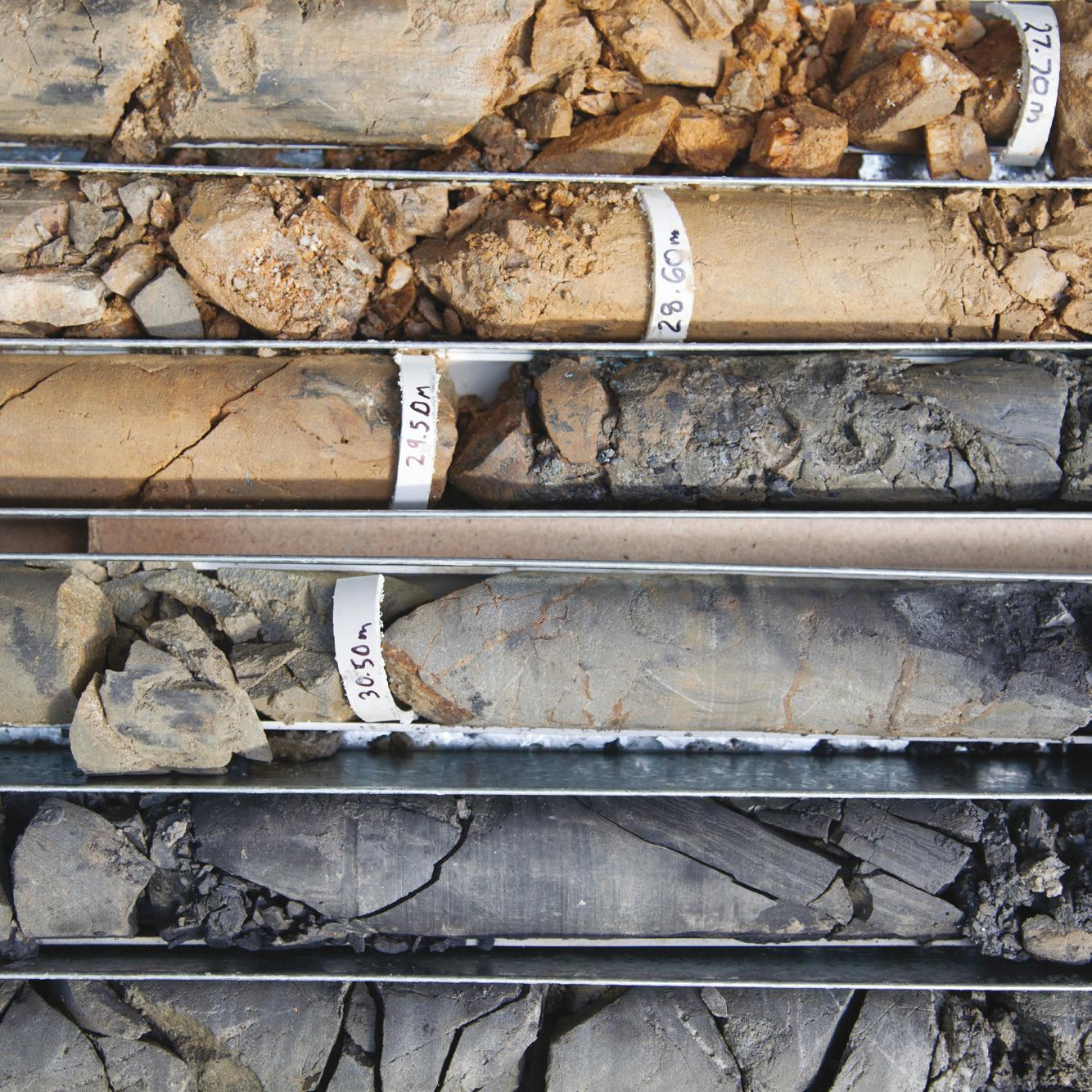
• Enter subsurface data into a single platform from desktop and mobile devices
• Manage crews and productivity in each shift
• Access data anywhere, anytime to make informed decisions for better outcomes
See how users have saved up to 40% in log development time

Subsurface Company
Seequent, The Bentley
Standards Update
December 2022
RECENTLY PUBLISHED
STANDARD SUBJECT / TEST SUPERSEDED/WILL
PD CEN TS 17847:2022
BS EN ISO 1789212:2018+A2:2022
Characterization of waste – Determination of selected low boiling point alcohols using gas chromatography with flame ionization detection after static headspace extraction (HS-GC-FID)
New
Geotechnical investigation and testing. Laboratory testing of soil. Determination of liquid and plastic limits Replaces
BS ISO 23265:2022 Soil quality – Test for estimating organic matter decomposition in contaminated soil New
BS EN ISO 236114:2022
Geotechnics - Array measurement of microtremors to estimate shear wave velocity profile New
Soil quality - Sampling of soil invertebrates – Part 4: Sampling, extraction and identification of soil-inhabiting nematodes Replaces BS ISO 24057:2022
STANDARD SUBJECT / TEST SUPERSEDED/WILL
ISO DIS 4974
Soil quality – Guidance on soil temperature measurement New ISO NP 7303 (New project)
Simplified method for oral bioaccessability of metal(oids) in soils New Will
ISO CD 8259 Soil quality – Bioaccessibility of organic and inorganic pollutants from contaminated soil and soil-like material New Will
CEN prEN 17505 Soil and waste characterization – Temperature dependent differentiation of total carbon (TOC400, ROC, TIC900) New CEN FprEN 17516 Waste – Characterization of granular solids with potential for use as construction material – Compliance leaching test – Up-flow percolation test New Text CEN Characterization……upward
ISO DIS18400-301
Soil quality – Sampling – Sampling and on site semi-quantitative determinations of volatiles in field investigations New ISO DIS 22036 Geotechnical investigation and testing – Field testing –Part 5: Prebored pressuremeter testSoil treated biowaste and sludge – Determination of elements using inductively coupled plasma optical emission spectrometry (ICP-OES)
Includes ISO CD 24212 Soil quality - Remediation techniques applied at contaminated sites New
36 Magazine
SELECTED INTERNATIONAL & EUROPEAN “GEOTECHNICAL”
PUBLISHED STANDARDS
SUPERSEDED/WILL SUPERSEDE STATUS
PUB DATE
New Standard Published October 2022
Replaces BS EN ISO 17892-12:2018 +A1:2021
Published September 2022
New standard Published November 2022
Replaces BS EN ISO 23611-4:2011
Published September 2022
New standard Published November 2022
“GEOTECHNICAL” STANDARDS – In preparation
SUPERSEDED/WILL SUPERSEDE
New standard
New standard
Will complement BS ISO 17924 – see also NP 8529
New Standard
Will complement BS ISO 17924 – see also NP 7303
New standard
New standard
Text will be identical to that in revised standard
CEN TS 16637-3 Construction products –Characterization……upward percolation test
New standard
Includes merger of ISO TS 16965 & EN 16171
New standard
STATUS PUB DATE
Comment period ended 6 April 2022 2022/23
Approved to proceed March 2022 2024
BSI Comment period ended 23 September 2022 2024
Second enquiry completed 2023
Proceeding to FDIS 2023
Proceeding to FDIS 2023
Comment period ended 5 June 2022 2023
Comment period on DIS ended 6 August 2022 2023
Proceeding to DIS 2024
37 January 2023
SELECTED INTERNATIONAL & EUROPEAN STANDARDS
STANDARD SUBJECT / TEST SUPERSEDED/WILL
CEN EN 1997-1
Eurocode 7 - Geotechnical design – General Rules Will




CEN EN 1997-2 Eurocode 7 - Geotechnical design – Ground properties Will

CEN EN 1997-3 Eurocode 7 - Geotechnical design – Geotechnical structures Will
EN ISO 18674-7
ISO DIS 18674-8
ISO FDIS 22476-1

Geotechnical investigation and testing – Geotechnical monitoring by field instrumentation – Part 7: Measurement of strains: Strain gauges
New
Geotechnical investigation and testing – Geotechnical monitoring by field instrumentation – Part 8: Measurement of forces: Load cells New
Geotechnical investigation and testing – Field testing –Part 1: Electrical cone and piezocone penetration test BS ISO
ISO DIS 22476-5 Geotechnical investigation and testing – Field testing –Part 5: Prebored pressuremeter test -
ISO CD 22476-16 Geotechnical investigation and testing – Field testing –Part 16: Borehole shear test -
ISO DIS 22477-2
Geotechnical investigation and testing – Testing of geotechnical structures – Part 2: Testing of piles: static tension load test New

(a) This table is derived from the work programmes of BSI Technical Committees EH/4-Soil quality and available for review and comment via AGS.
SOCOTEC

SOCOTEC is the UK’s market leading provider of site investigations, drawing on over 80 years’ experience in delivering high quality services. With expert field operations, backed up by UKAS accredited analytical testing and proven technical support, we help our clients to minimise ground related uncertainty and risk, as well as maximising efficiencies. We provide a complete, integrated package of services, covering the whole project lifecycle from the prebuild phase through to site investigation, design, construction and the built stages. As part of this service, we accurately investigate, test and advise on ground, geological and structural conditions.


GEOTECHNICAL SERVICES
–Our services include: › Ground Investigation › Drilling and Sampling › In Situ (Field) Testing › Monitoring › Cone Penetration Testing (CPT) › Pressuremeter Testing › Geotechnical Services › Site Surveys › Topographic Surveys › Geophysical Surveys › Underground Utility Surveys › Contaminated Land Investigation › Environmental Chemistry Testing › Materials Testing www.socotec.co.uk 01283 554400
SUPERSEDED/WILL SUPERSEDE
Will partially replace BS EN 1997-1: 2004 + A1: 2013
Will replace BS EN 1997-2: 2007
Will partially replace BS EN 1997-1: 2004
STATUS PUB DATE
Comment period ended 22 November 22 2024
Comment period ended 22 November 22 2024
Comment period ended 22 November 22 2024
New standard Project initiated 2024
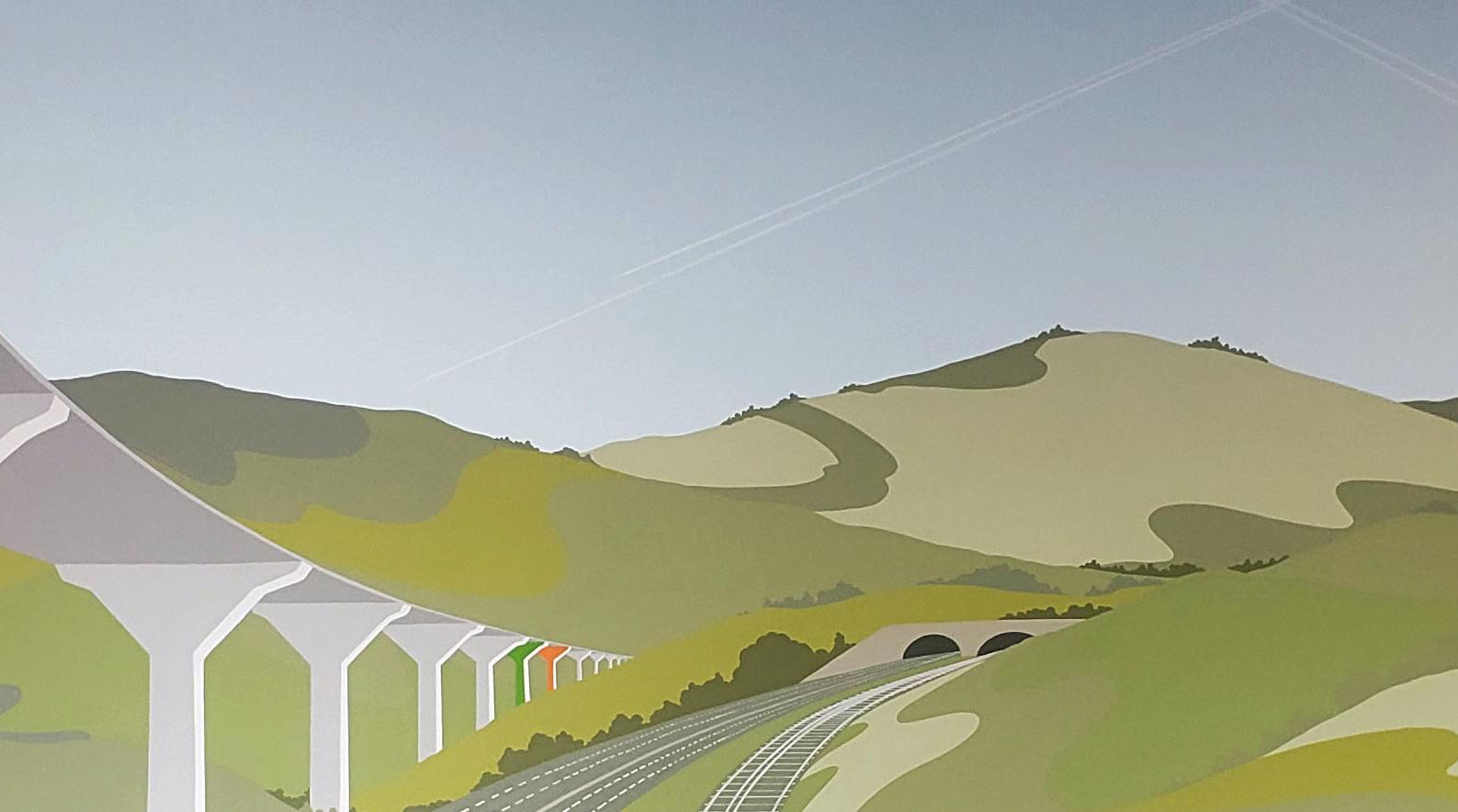
New standard
ISO 22476-1:2012
ISO comment period ended 20 October 2022 2024
ISO comment period ended 29 August 2022 2022
Comment period ended 5 June 2022 2023
ISO comment period ended 27 September 2022 2024
New standard Comment period on DIS ended 5 June 2022 2023
STANDARDS ON SOIL & SITE ASSESSMENT - In preparation
www.bamritchies.co.uk Lifecycle assurance to safeguard your assets INSTRUMENTATION AND MONITORING PLAN | INSTALL | RECORD | PROCESS | REPORT BAM Ritchies National coverage delivered by regional expertise
B/526/3-Ground investigation and ground testing. Copies of draft standards (e.g. CD, DIS) are usually
Training Courses
Equipe Training: Specialist Geotechnical Courses
Equipe Training's specialist geotechnical training courses are delivered both in person at our dedicated training facility just outside of Banbury, Oxfordshire, and also online via Zoom!
Available upcoming dates are provided below:
Î 18th January 2023 - Basic Foundation Design
Î 23rd February 2023 - Earthworks Design and Construction (Online Course)
Î 14th March 2023 - Professor David Norbury’s Soil Description Workshop

Î 19th April 2022 - Professor David Norbury’s Rock Description Workshop
Î 26th April 2023 - Slope Stability Design
Places on these courses can be booked online here, or via contacting Equipe on +44 (0)1295 670990 or info@equipegroup.com
Equipe Training: Specialist Geotechnical Heath and Safety Courses
Equipe Training and their health and safety training partners RPA Safety Services and EB Safety Solutions are delighted to announce their collection of specialist health and safety courses for the geotechnical market have resumed being delivered in person, as well as being delivered online where required.
These courses are approved and certified by the Institution of Occupational Safety and Health (IOSH) and meet the requirements of UK Health and Safety regulations for working on geotechnical and land drilling sites. Upcoming courses have limited numbers of places available in order to maintain social distancing within the classroom environment. Upcoming dates include:
Î 24th - 26th January 2023 - IOSH Safe Supervision of Geotechnical Sites
Î 16th February 2023 - IOSH Avoiding Danger from Underground Services
Places on these courses can be booked online here, or via contacting Equipe on +44 (0)1295 670990 or info@equipegroup.com


40 Magazine
We're pleased to announce that the SiLC Annual Forum is taking place virtually on Wednesday 29th March 2023.
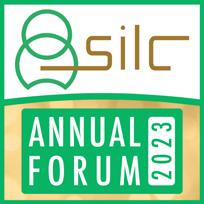
This half day event, Chaired by Tom Henman (SiLC PTP Chair), will bring together industry professionals for a stellar programme of presentations and discussions.
This years event will be divided into two sessions; Climate & Sustainability and Looking into the Future. We have a host of presentations confirmed for the event including The Development and Application of Carbon Calculator Tools to Sustainable Development (Sarah Cook, Leap Environmental), Soil Health and Biodiversity of Soils (Felicity Crotty, RAU), PFAS; What the UK can Learn from Jersey and Guernsey, (James Lemon, Arcadis), Post-Brexit Regulation of Excavated Materials: waste not want not; waste, want or not; want, not waste; not want, waste, (Paul Nathanail).
There will also be a panel discussion, Chaired by Claire Dickinson on the topic, "What do land condition professionals consider they need to understand to tackle climate change and sustainability challenges?". Further speakers will be announced in due course.
TICKETS
Tickets for the SiLC Annual Forum are priced at the following rates, all of which are inclusive of VAT:
SiLC Members: £66 Non SiLCs: £105.60 Retired SiLC Members: £26.40 Affiliate Scheme: £52.80
Local Authority & Other Public Sectors, Jobseeking/Graduates and Students may attend the Annual Forum free of charge.
To register, click HERE and complete the registration form. Payment must be received by Friday 24th March.
Directory
Geotechnical

Engineering
Centurion House, Olympus Park, Quedgeley, Gloucestershire, GL2 4NF 01452 527743 geotech@geoeng.co.uk
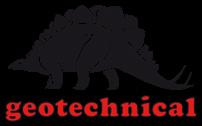
January 2023 41

42 Magazine An online advertising campaign within the AGS Magazine will help to build and increase industry awareness of your company’s profile, initiatives and offerings. The AGS can help build a package to suit your needs and budget; whether it’s a series of adverts across multiple issues, a combination of event sponsorship and advertising, or a single advertorial. How to Advertise in the AGS Magazine The AGS Magazine is a free email publication that looks at a range of topical issues, insights and concerns, whilst publishing new guidance notes, working group activities and information on upcoming industry seminars. With 6 issues each year, our subscribers include industry professionals such as practitioners, chartered specialists, senior decision makers and managing directors To receive a media pack or to discuss advertising rates, please contact Caroline Kratz on 0208 658 8212 or email ags@ags.org.uk Advert Sizes and Rates All adverts should be sent in a PDF, PNG, JPEG, TIFF, PSD (Photoshop) or EPS (Illustrator) format. All advertising artwork must be supplied in 114 dpi resolution. Artwork must be delivered to the AGS using the agreed artwork specification size listed left. Artwork should be emailed to ags@ags.org. uk no later than 10 days prior to publication. Advertising Requirements HALF PAGE FULL PAGE QUARTER PAGE DIRECTORY W: 210mm H: 145mm RATE: £250 W: 210mm H: 297mm RATE: £400 W: 105mm H: 145mm RATE: £160 Company name, address, contact number, email and one logo. RATE: £50 COMPANY NAME ADDRESS CONTACT NUMBER EMAIL LOGO Advertising and Rates
How to become a Member of the AGS
AGS Members all share a commitment to quality in the geotechnical and geoenvironmental industry. This has become widely recognised by clients, governmental bodies and other associations that touch issues to do with the ground. We welcome both companies and individuals who want to be recognised for their quality of practice to join our growing membership of over 130 Members. We shape our industry, continually improve practice and collaborate on issues that affect us all; from clients, all the way through to the people who use the land and the buildings we help develop.
To become a Member of the AGS, please visit http://www.ags.org.uk/about/become-a-member and submit your application online. Please note that all membership applications are reviewed by the Membership Committee 6 weeks in advance of each quarterly Executive meeting. The deadline for the next round of completed applications is Tuesday 2nd May 2023
AGS Chemical and Legal Helplines
All Members of the Association of Geotechnical and Geoenvironmental Specialists are entitled to free chemical and contractual advice through the use of Loss Prevention Committee Members, Marquis & Lord and Beale & Co.

For advice on chemical safety and best practice, Marquis & Lord will provide 30 minutes of free advice to all AGS Members.
Additionally, if you’re an AGS Member and are looking for legal advice, please contact Beale & Co and quote ‘AGS Helpline’ where the first 15 minutes of legal advice will be free of charge.
CHEMICAL SAFETY HELPLINE
Marquis & Lord Tel: +44 (0) 121 288 2386 www.marquisandlord.com

(Please quote ‘AGS Helpline’)
LEGAL HELPLINE
Beale & Co
Tel: +44 (0) 20 7469 0400 www.beale-law.com
Member Reporting Service for Industry Issues
If you have any queries regarding AGS Data Format, there is a discussion forum on the AGS Data Format website, where queries can be posted and answered by the Data Format team. If a Member has any issues with regard to Safety, Contaminated Land, Geotechnical, Instrumentation & Monitoring or Laboratories which you think the industry should be aware of please email ags@ags.org.uk, we will then forward your email to the relevant AGS Working Group.
Disclaimer
All articles in the AGS Magazine are the opinions of the authors and are not intended to be a complete or comprehensive statement of the law, nor do they constitute legal or specialist advice. They are intended only to highlight current issues from date of publication that may be of interest. Neither the writer(s), nor the AGS, assumes any responsibility for any loss that may arise from accessing, or reliance on the material and all liability is disclaimed accordingly. Professional advice should be taken before applying the content of the articles to particular circumstances.
January 2023 43


































































